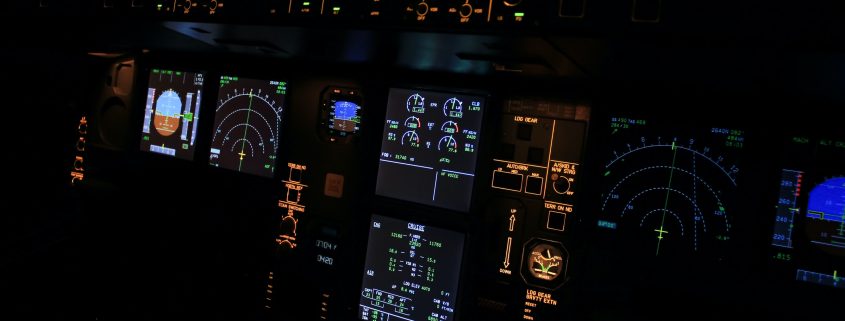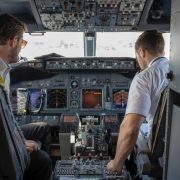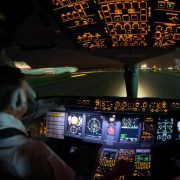Night vision and the flight deck
Why is it so important for all crewmembers, flight attendants and pilots, to adapt their vision to outside conditions for takeoff and landing, particularly at night?
Night vision for takeoff and landing is very important as it has direct implications to safety, that of the flight attendants, the pilots, and of the passengers. Most likely during training, flight attendants are taught to adjust the cabin lighting to the outside lighting prior to takeoff and landing so everyone’s eyes will adapt to the outside light faster than going from a bright cabin to the dark outside. This is why flight attendants turn off the cabin lights and sometimes include announcements to passengers that they may turn on their reading light if they wish to do so. This is also why flight attendants turn off the forward galley lighting before they go into the flight deck at night. Bright light entering the flight deck can affect the pilot’s adapted night vision. Why is this a concern? Pilots at times need to scan the night sky for other planes in the area. If their night vision is harmed, it can take another 5 – 10 minutes for them to see better outside into the night sky.
It can take your eyes anywhere from 5 to 10 minutes to adapt to the natural lighting outside. Have you ever been outside on a moonless night with no lights on, but by staying outside for a few minutes, as long as there is a little bit of ambient light from the stars, over the next few minutes you were able to begin seeing things in that room? This is how our eyes are all the time. In the interest of safety, flight attendants should always remember to have the cabin lighting adjusted to the outside lighting, particularly for night flights. Going from a dark cabin to bright lights, it might be a shock to the eyes for a few seconds, but they adapt quickly. It takes a few minutes for your eyes to adapt to darkness.
For clarification, if it’s a daytime flight, it does not mean you need to turn on the cabin lights to full bright. The cabin lights can be off, as the ambient light will enter the cabin with the window shades open. However, come evening and nighttime, that’s when the cabin lights should be dimmed to the lowest setting or turned off according to company policy. It’s not a regulation to adjust the cabin lighting to the outside lighting, it’s a best safety practice that everyone should do as flight attendants are safety professionals and should want to do things as best as they can to promote and or enhance safety.






Leave a Reply
Want to join the discussion?Feel free to contribute!